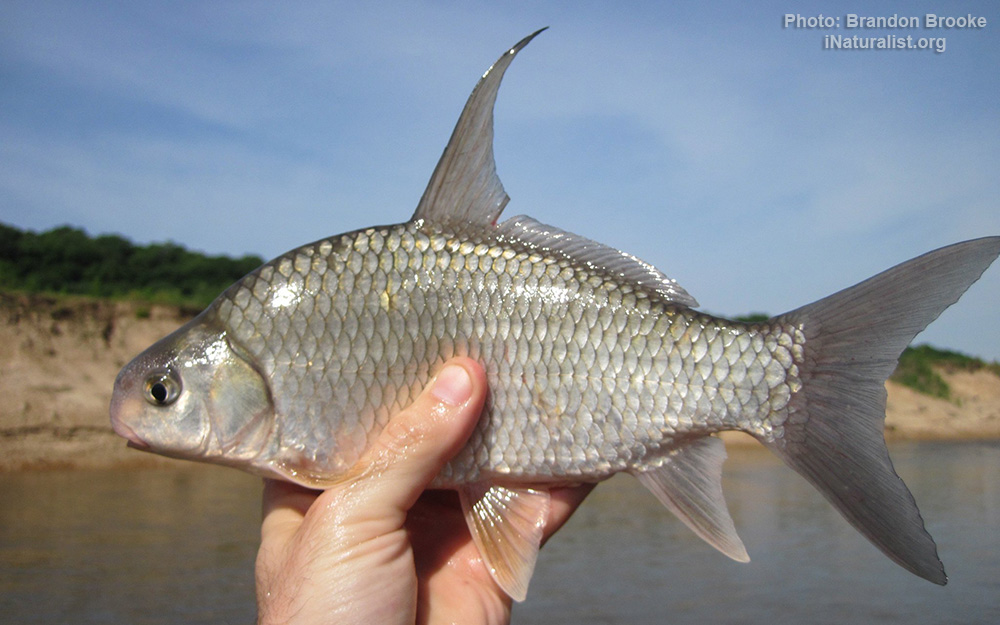Highfin carpsucker
(Carpiodes velifer)

Classification
General data
The highfin carpsucker (Carpiodes velifer) is a freshwater fish found in the southeastern and midwestern United States. Its usual habitat is medium to large-size rivers where it is mostly found 1 to 3 metres (3 to 10 ft) beneath the surface.
It is a silvery fish with a prominent dorsal fin, which grows to an average length of 26.5 centimetres (10 in), with a maximum recorded length of 50 centimetres (20 in).
It reaches sexual maturity at the age of three and females lay a clutch of about two dozen eggs once a year in the spring or early summer. This fish forages on sandy or gravelly bottoms for such small invertebrates as crustaceans, protozoa and mollusks as well as filamentous algae. Young fish are preyed on by northern pike, muskellunge, walleye and largemouth bass and larger fish are caught by recreational fishermen. The highfin carpsucker competes with catfish and does not thrive in rivers with high levels of siltation.
Distribution
Highfin carpsuckers can be found throughout most of the eastern part of the United States and partially west of the Mississippi River. They have a traditional temperate-water distribution and are most commonly found between 46 and 31°N. They can inhabit waters from South Dakota to Louisiana, but are not found in the northeast portion of the United States. They can be found even more abundantly in the Mississippi River basin and the Lake Michigan drainages, as well as in adjacent rivers and drainages.
The highfin carpsucker has been introduced in the Santee River and along Cape Fear in North Carolina.
They tend to stay in more shallow water than most carpsuckers and do not go in smaller streams like the quillback.











